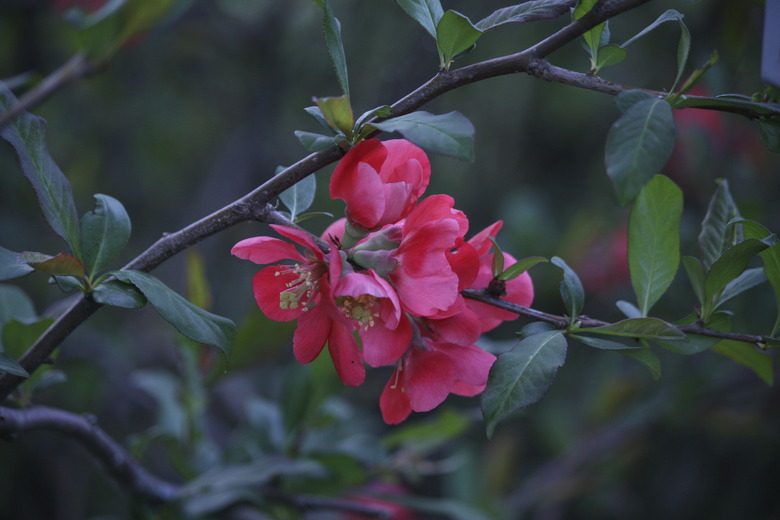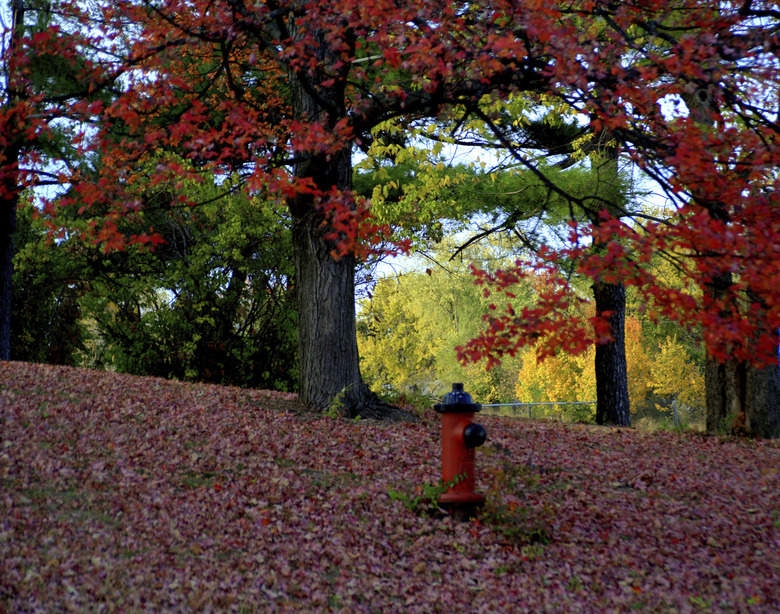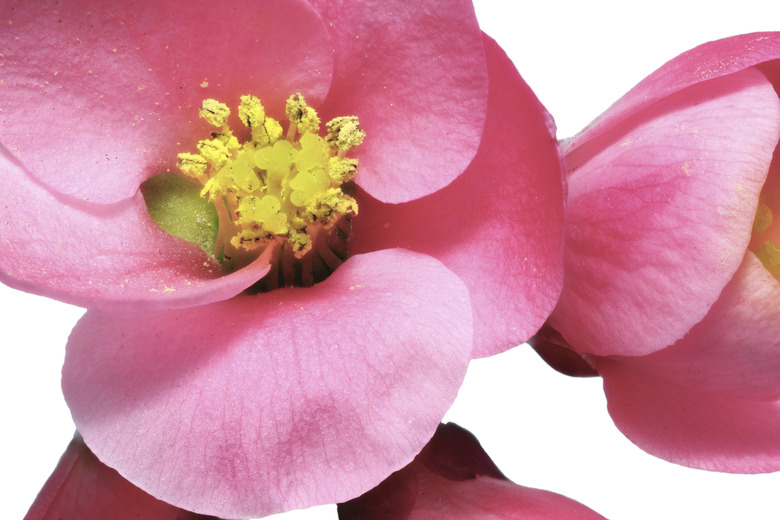When To Prune A Flowering Quince Bush?
Flowering quince, also known as Japonica (Chaenomeles speciosa), is a shrub growing 10 feet high by10 feet across in zones 4 through 9. The plant bears tough thorns, making it an ideal living fence, but it is most prized for late winter blooms. Small, pear-like autumn fruit are prized by a select few for jam making, but considered merely ornamental by most gardeners. Mindful annual pruning will maximize the quince's dramatic floral display.
Late Spring Pruning for Flowers
To maximize your quince floral display, prune your quince bush in late spring, just after the shrub has finished blooming. Use long-handled anvil loppers, as they allow you to reach into the interior structure of the plant but also to hold onto the end of the stem you just cut. This allows you to withdraw stems from the plant without having to reach in past those long, sharp thorns. Rose gardening gloves, with their long gantlet, or heavy leather rock gloves, are also helpful.
For late spring pruning, cut about half of the stems which have just completed blooming back to the base of the plant. Then trim about one-quarter of the older, woody stems back to where a cluster of young branches are emerging. Do not cut any new stem sprouts. The flowers bloom only on 1-year-old branches, so this year's new shoots are next year's late-winter blossoms.
Late Fall Pruning for Fruit
Quince produce fruit erratically, but the small, pear-shaped fruit are a gourmet treat for pies or jellies. Quince is a member of the rose family, and the odd fruits bear a sweet apple-rose flavor used by chefs to complement upland game bird dishes. Spring pruning of flower canes will eliminate the chance of producing fruit, so delay pruning until after the fall harvest if fruit production is your goal.
Forcing Flowers Indoors
Quince flowers will bloom early on stems brought indoors in mid-winter. If your quince bush requires cutting back, or if you just need that breath of spring inside your home, use sharp by-pass pruners to cut long, 1-year-old stems from your quince bush in late January or early February. Indoors, cut the stems at an angle while holding them under water, and place them in a large vase in a warm room. The blossoms will soon open filling the house with a light spring-apple scent.



